Sometimes I wonder how I manage to get up in the mornings, and other times I marvel we manage to get anything done at all, such are the myriad distractions on offer but to be able to wonder, to marvel at something created by man or nature can be truly breath-taking and inspirational.
We’ve encountered two manmade wonders in this past week alone – and another that combines the wonder of nature with the ingenuity and skill of man.
Over 50 years ago, the Seven Wonders of the Waterways were compiled. Robert Aickman, supernatural fiction author and active conservationist, was responsible for the original list. Together with LTC Rolt, he co-founded the Inland Waterways Association, and his list was one way of encouraging people to explore the waterways to keep them alive.
This week along we’ve travelled two of them – the remarkable Anderton Boat Lift and the Barton Swing Aqueduct.

The Anderton Boat Lift is something we’ve visited in the past but never been able to travel on until now. It towers on huge metal legs astride the edge of the River Weaver. In huge watertight tanks, each moved by a massive single piston, it transports boats vertically up and down the 50-foot drop between the Trent and Mersey Canal and the River Weaver.
Now transporting leisure boats and a trip boat for the delight of those without a boat of their own, the massive Meccano-like structure was built in 1875 to lift cargo boats carrying salt, pottery and coal to the international port of Liverpool and returning laden with foreign goods.
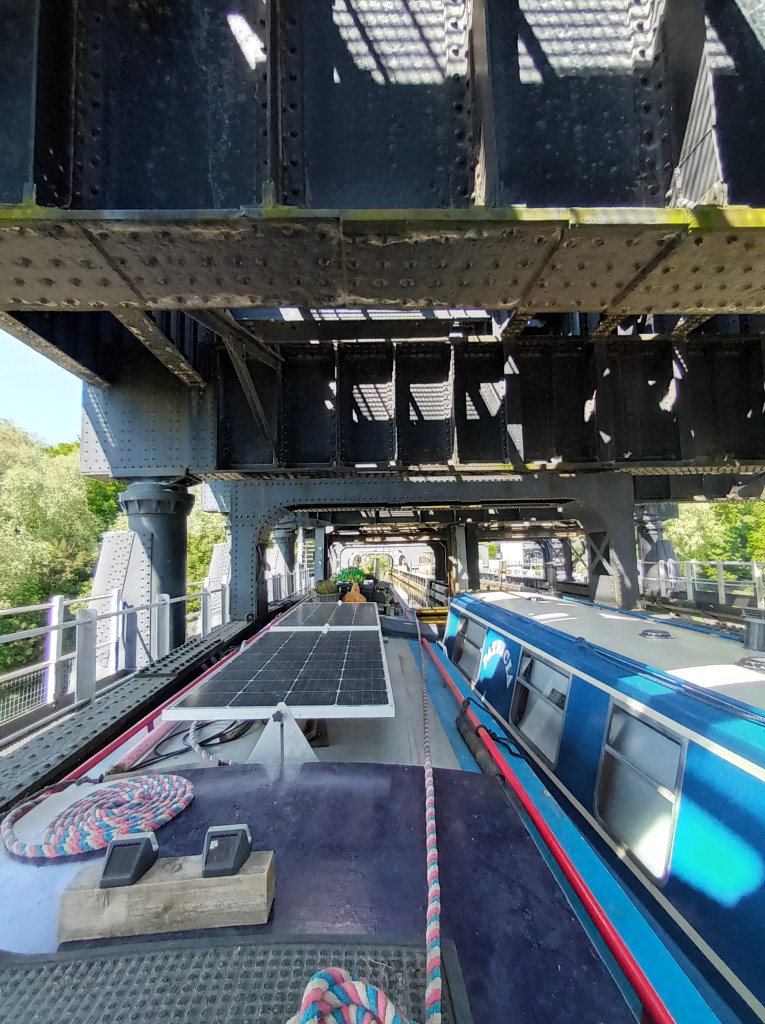
It is surprisingly slow – and at the moment of departure, it is currently quite jerky when it starts. This is apparently due to the tightness of the seals that were replaced last year.
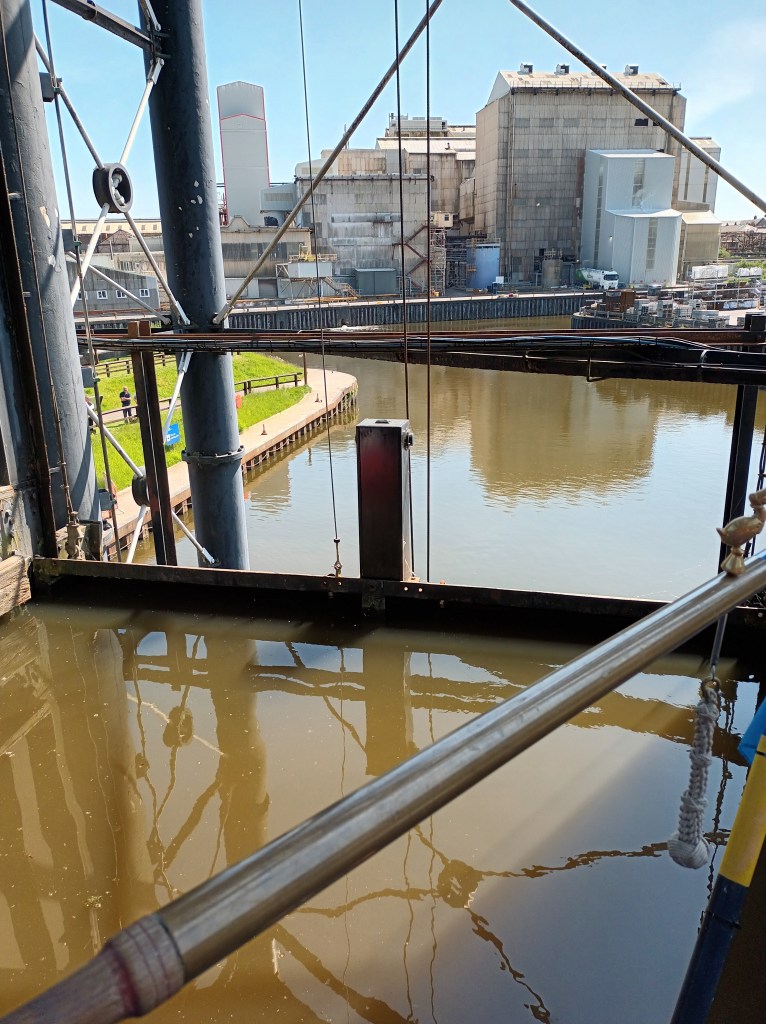
Two narrowboats can be transported a time. One at a time they move into the entrance to the available entry tank when a guillotine gate is opened to let them through. Once both are in and positioned side by side, the gate is closed behind them, and the next water tight gate pulled up to enable them both to move through together at a signal from the operator. This positions both boats in the moveable caisson, they tie to the side, switch off engines and begin their journey. We turned from the Trent and Mersey into the entrance of the lift at 10.18am and at 10.49 we restarted our engine, cast off the rope and headed out onto the River Weaver. It is a remarkable feat of engineering, and certainly wonderous, not least to be still operating today.
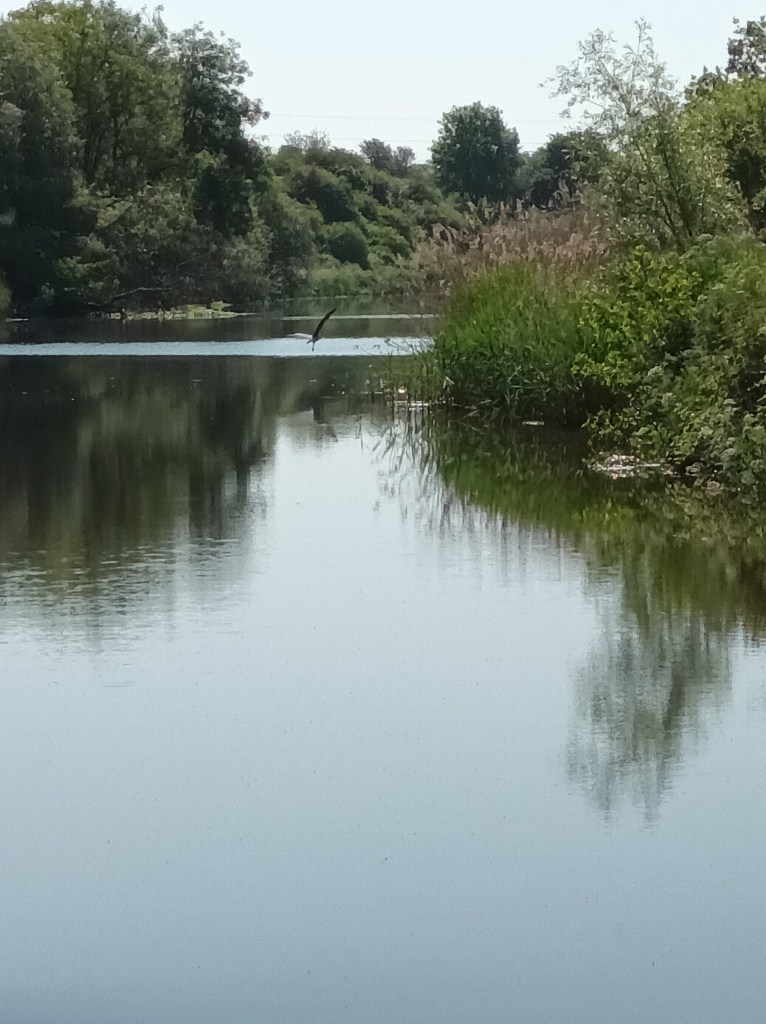
We just voyaged to Northwich along the river to buy milk and supplies before heading back the same day, another lift journey up above the Weaver. The journey back was infinitely noisier than the descent courtesy of the boatowner who came up alongside us and insisted on playing his music at volume the entire time. Being British we said not a word – but he couldn’t have heard if we’d tried! Thankfully, we had experienced how remarkably silent the mechanism is on the descent in the company of a delightful couple from South Africa enjoying the waterways.

From our return we had just 6 miles 5¼ furlongs remaining on the Trent and Mersey before joining the waters of the Bridgewater Canal, a 39-mile private waterway operated not by Canal and River Trust nor the Environment Agency, but by The Bridgewater Canal Company, an arm of The Peel Group. It stretches from Runcorn to Leigh in Greater Manchester, and features one of the Seven Wonders of the Waterways, the Barton Swing Aqueduct.
This swinging aqueduct enables the canal to cross the Manchester Ship Canal which carries large commercial vessels. It opens to allow these big boats through, and is the first and only swing aqueduct in the world, and still operating today. It was originally opened in 1894 and was designed by Edward Leader Williams, the same engineer responsible for the Anderton Boat Lift.

We have on our travels to date been remarkably fortunate to have experienced and marvelled at four of the other original Seven Wonders of the Waterways –
The Pontcysyllte Aqueduct over the River Dee on the Llangollen Canal

Standedge Tunnel – the deepest, longest at nearly 3.5miles, and highest canal tunnel in the country burrowing under the Pennines
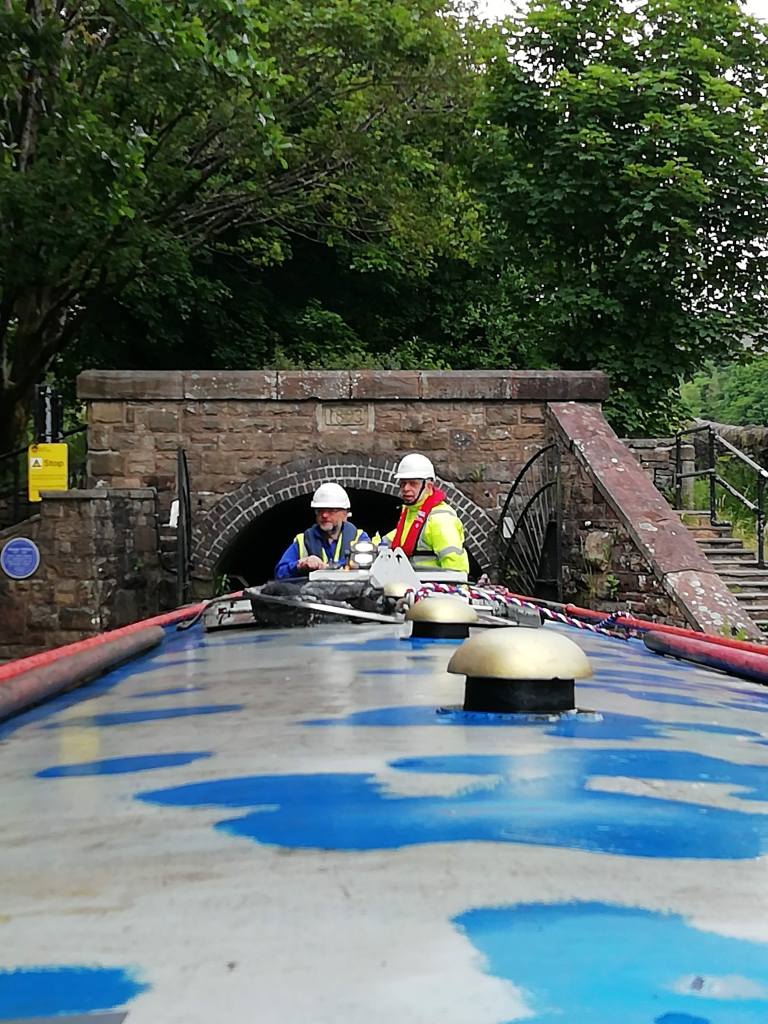
Bingley Five-Rise Locks – a staircase flight of 5 locks completed in 1774 since when they have continued transporting boats 60ft to and from the Yorkshire Dales.
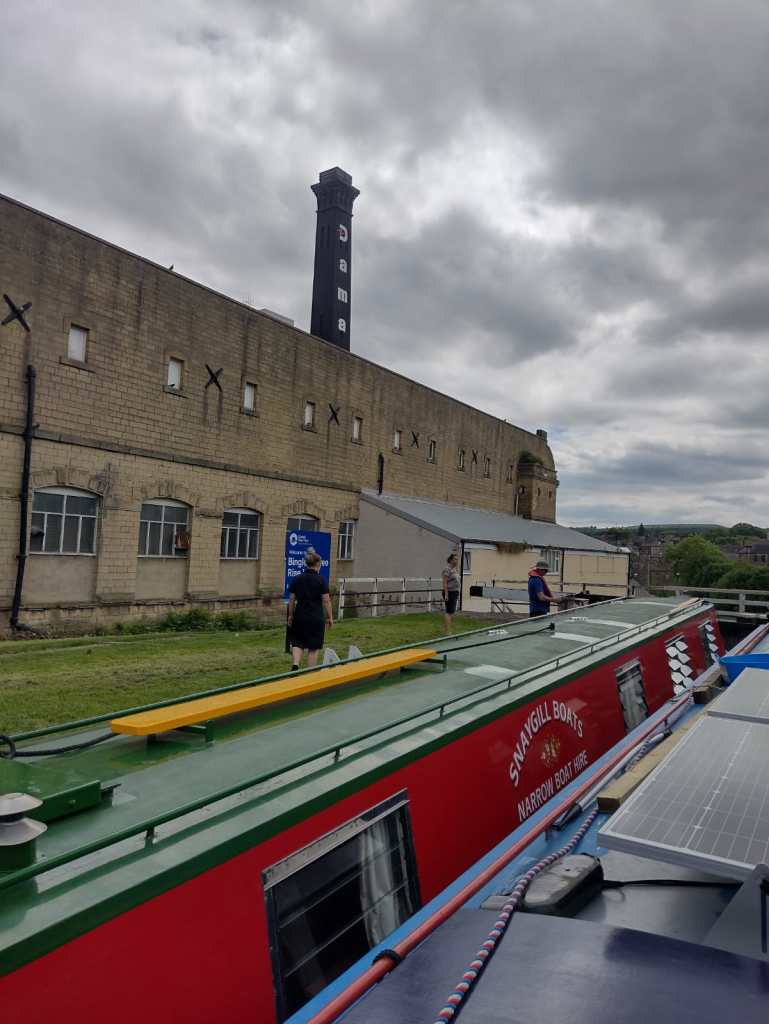
Burnley Embankment – a mile-long embankment through the heart of the Lancashire industrial town carrying boats above the rooftops of terraced houses some 60ft below.
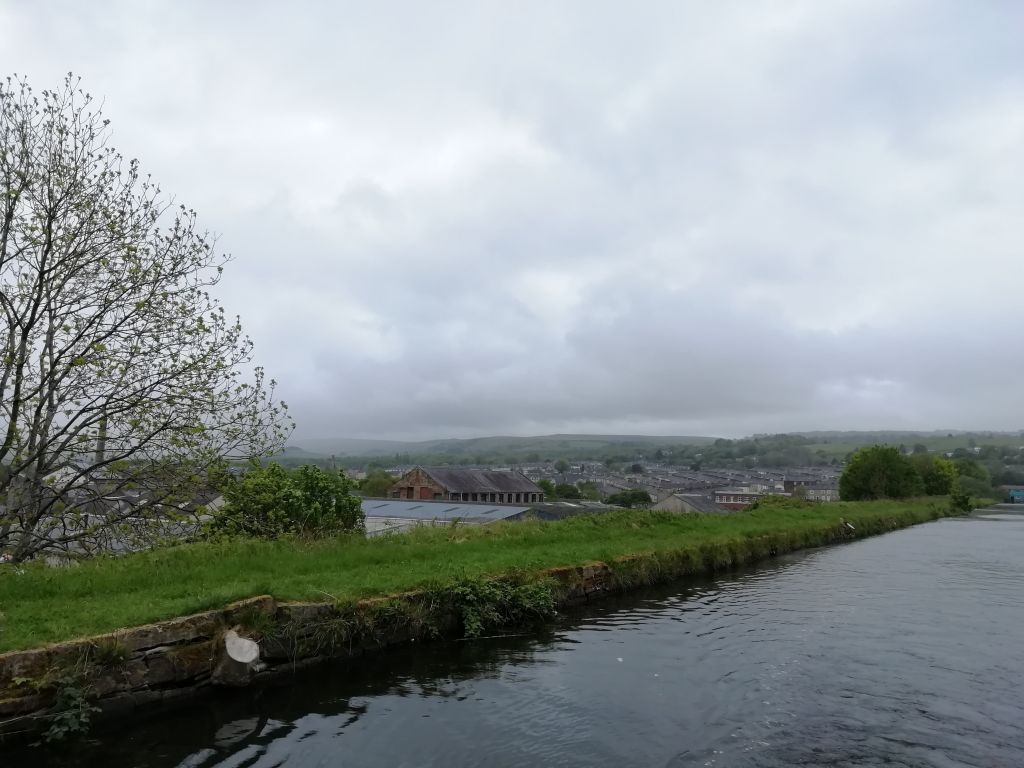
So the one original wonder that we’re keeping as a treat for the future is the Caen Hill Flight of 16 locks which rises across the Wiltshire countryside near Devizes.
Over the years people have added other wonders they’ve found, and we can add many, but on this trip we also discovered the delights and wonders of RHS Bridgewater, a manmade wonder of nature. When we’ve passed before it was a building site and now it is a developing, glorious riot of colour and form, shape and a seemingly effortless blend of formal and informal spaces. Definitely wonderful!

In other news we’re on tenterhooks, trying our first bit of trading this weekend having finally sorted the insurance. GULP! More wonder – will we sell anything????
